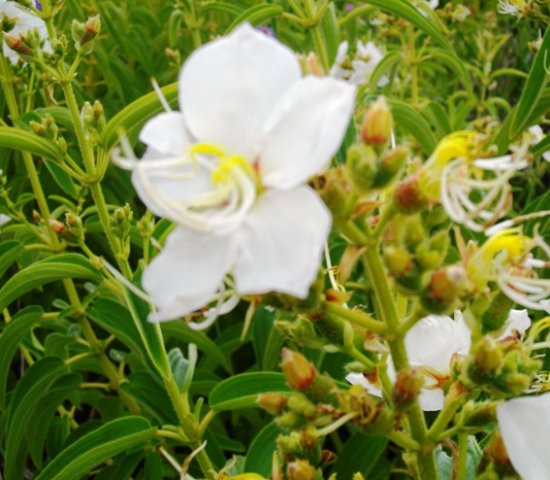Dissotis princeps white flowers

Author: Ivan Lätti
Photographer: Ivan Lätti
Dissotis princeps, commonly known as wild tibouchina or lasiandra, is a fast growing herbaceous shrub that thrives in marshes and other damp places. It reaches heights around 3 m.
The leaves grow opposite or whorled along the stems. The leaf-shape is lanceolate, the blades velvety with 3 to 7 prominent veins. The veins curve out beside the midrib en route from base to apex. This venation is a feature on leaves of the tibouchina family.
The flower colour is lilac or purple, occasionally white, as can be seen in this specimen photographed at Kirstenbosch in March. The blooming season lasts long, from January and in warmer areas through the winter to October.
The natural distribution is not continuous. Discrete regions lie in Limpopo, Mpumalanga and KwaZulu-Natal, as well as in parts of tropical East Africa.
The roots of this plant are sometimes eaten in circumstances of extreme need as famine food. It is also used as a stock fodder, especially to feed calves. The plant also has some medicinal properties recognised by certain traditional communities (Manning, 2009; www.plantzafrica.com).

